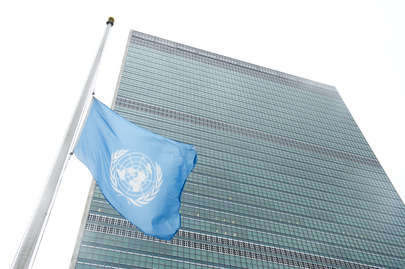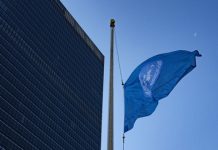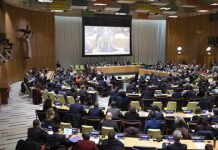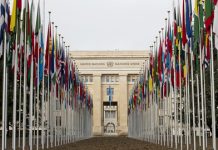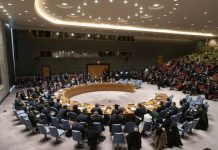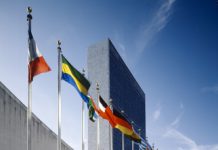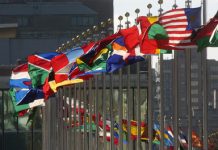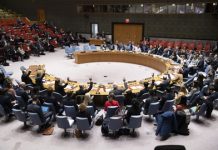The world is retreating from gender equality, and the cost is being counted in lives, rights, and opportunities. Five years from the Sustainable Development Goals (SDGs) deadline in 2030, none of the gender equality targets are on track.
That’s according to this year’s SDG Gender Snapshot report launched on Monday by UN Women and the UN Department of Economic and Social Affairs, which draws on more than 100 data sources to track progress across all 17 Goals.
World at a crossroads
2025 marks three major milestones for women and girls: the 30th anniversary of the Beijing Declaration and Platform for Action, the 25th anniversary of United Nations Security Council resolution 1325 on women, peace and security, and the 80th anniversary of the United Nations, but with the new sobering data, it is urgent to accelerate action and investment.
Other findings in the report reveal that female poverty has barely shifted in half a decade, stuck at around 10 per cent since 2020. Most of those affected live in sub-Saharan Africa and Central and Southern Asia.
A two-year-old girl suffering from malnutrition is fed by her mother at their shelter in Cox’s Bazar, Bangladesh.
Conflict magnifying the crisis
In 2024 alone, 676 million women and girls lived within reach of deadly conflict, the highest number since the 1990s.
For those caught in war zones, the consequences extend far beyond displacement. Food insecurity, health risks, and violence rise sharply, the report notes.
Violence against women and girls remains one of the most pervasive threats. More than one in eight women worldwide experienced physical or sexual violence at the hands of a partner in the past year, while nearly one in five young women was married before the age of 18. Each year, an estimated four million girls undergo female genital mutilation, with over half cut before their fifth birthday.
Prioritizing gender equality
Yet, amid the grim statistics, the report highlights what is possible when countries prioritize gender equality. Maternal mortality has dropped nearly 40 per cent since 2000, and girls are now more likely than ever to finish school.
Speaking to UN News, Sarah Hendriks, Director of the Policy Division at UN Women, said that when she first moved to Zimbabwe in 1997, “giving birth was actually a matter of life and death”.
“Today, that’s no longer the reality. And that’s an incredible level of progress in a short 25, 30 years”, she added.
Closing the gender digital divide
Technology, too, holds promise. Today, 70 per cent of men are online compared to 65 per cent of women. Closing that gap, the report estimates, could benefit 343.5 million women and girls by 2050, lifting 30 million out of poverty and adding $1.5 trillion to the global economy by 2030.
“Where gender equality has been prioritized, it has propelled societies and economies forward,” said Sima Bahous, Executive Director of UN Women. “Targeted investments in gender equality have the power to transform societies and economies.”
At the same time, an unprecedented backlash on women’s rights, shrinking civic space, and growing defunding of gender equality initiatives is threatening hard-won gains.
According to UN Women, without action women remain “invisible” in data and policymaking, with 25 per cent less gender data available now due to survey funding cuts.
A girl uses a tablet during class at her school in Safi, South Niger.
“The Gender Snapshot 2025 shows that the costs of failure are immense but so are the gains from gender equality,” said Li Junhua, United Nations Under-Secretary-General for Economic and Social Affairs.
“Accelerated action and interventions focused on care, education, the green economy, labour markets and social protection could reduce the number of women and girls in extreme poverty by 110 million by 2050, unlocking an estimated $342 trillion in cumulative economic returns.”
Urgent choice
But progress remains uneven, and often painfully slow.
Women hold just 27.2 per cent of parliamentary seats worldwide, and their representation in local governments has stalled at 35.5 per cent. In management, women occupy only 30 per cent of roles, and at this pace, true parity is nearly a century away.
Marking 30 years since the Beijing Platform for Action, the report frames 2025 as a moment of reckoning.
“Gender equality is not an ideology,” it warns. “It is foundational for peace, development, and human rights”.
Ahead of the UN high-level week, the Gender Snapshot report makes clear that the choice is urgent: invest in women and girls now, or risk losing another generation of progress.
Ms. Hendriks shared UN Women’s message for world leaders: “Change is absolutely possible, and a different pathway is before us, but it is not inevitable, and it requires the political will, as well as the determined resolve of governments right around the world to make gender equality, women’s rights and their empowerment a reality once and for all”.
Anchored in the Beijing+30 Action Agenda, the report identifies six priority areas where urgent, accelerated action is needed to achieve gender equality for all women and girls by 2030, which include a digital revolution, freedom from poverty, zero violence, full and equal decision-making power, peace and security and climate justice.
Source of original article: United Nations (news.un.org). Photo credit: UN. The content of this article does not necessarily reflect the views or opinion of Global Diaspora News (www.globaldiasporanews.com).
To submit your press release: (https://www.globaldiasporanews.com/pr).
To advertise on Global Diaspora News: (www.globaldiasporanews.com/ads).
Sign up to Global Diaspora News newsletter (https://www.globaldiasporanews.com/newsletter/) to start receiving updates and opportunities directly in your email inbox for free.


